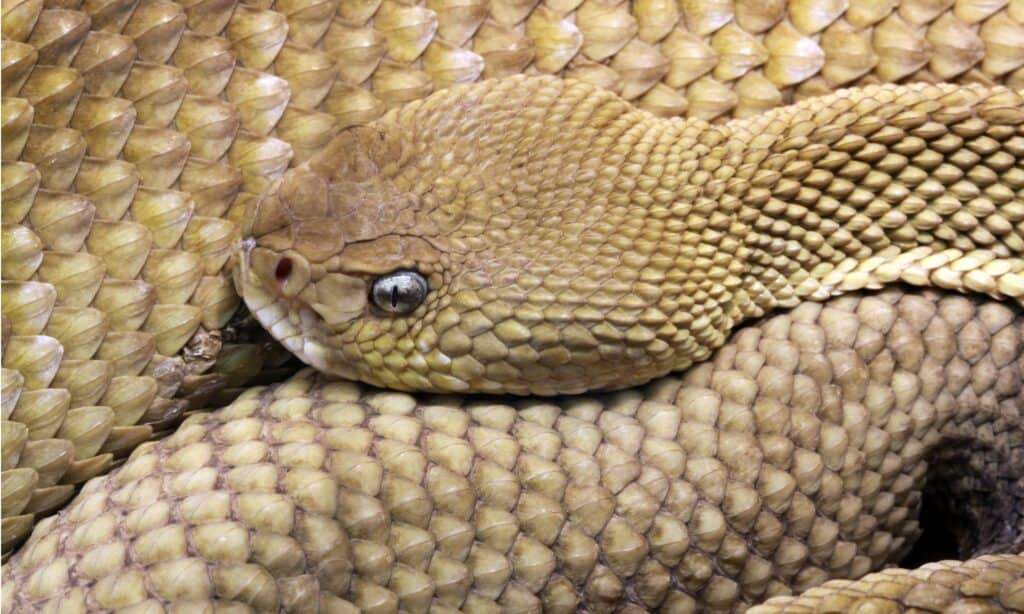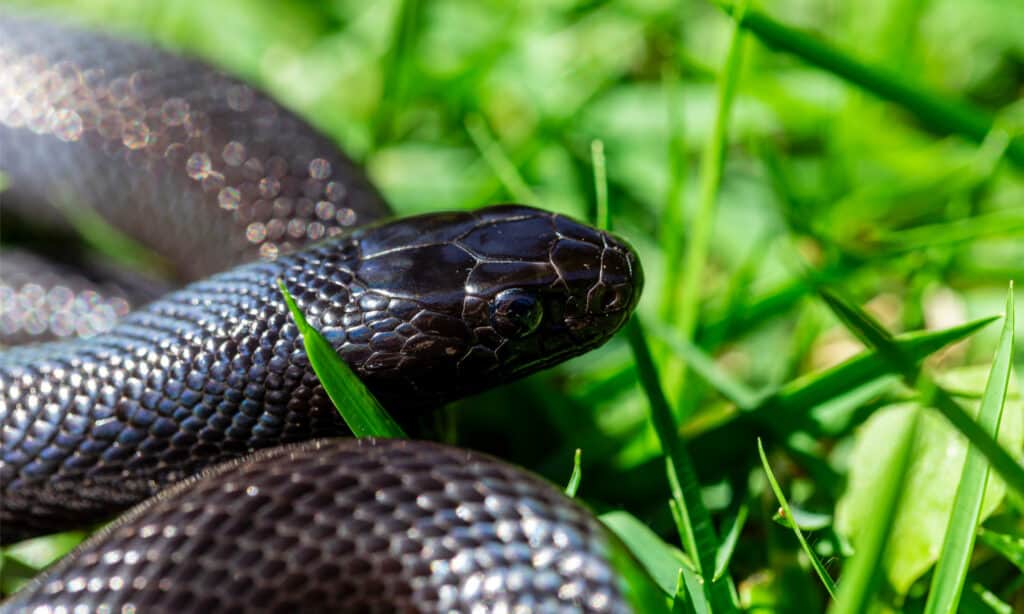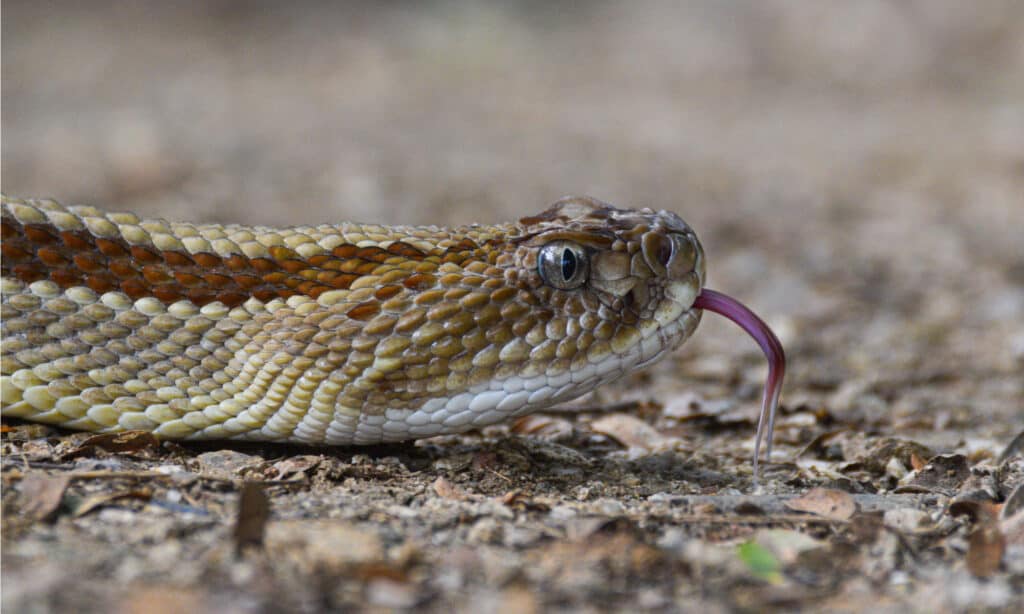Mexico is revered for many things, including beautiful beaches, delicious foods, and wildlife, which undoubtedly invites tourists year in and year out. Contrary to the lovely view of beaches, whales, sea turtles, sharks, and other wildlife, Mexico is home to many snakes.
Snakes, known scientifically as Serpentes, are creepy, legless reptiles with elongated bodies, heads, and long tails. These reptiles belong to the kingdom Animalia, phylum Chordata, class Reptilia, and order Squamata. They are closely related to lizards and cover more than 3,000 species worldwide.
With different kinds of snakes varying in types, color, and habitat spread across other parts of the universe, one would wonder what the largest snake in the world is and the most venomous.
This article will reveal the largest snake caught live in Mexico and the largest extinct snake.
Largest Snake Found Alive in Mexico

Crotalus basiliscus is a huge venomous pit viper species (family
Viperidae) without any valid subspecies.
©iStock.com/Ben185
One of the world’s biggest snakes, and Mexico’s largest living snake, was found alive in Mexico in 2013. Endemic to western Mexico, Crotalus basiliscus is a huge venomous pit viper species (family Viperidae) without any valid subspecies. It is so-called because of its large size and potent venom. As most animals would react in self-defense, this snake tried to attack one of the people who wanted to capture it. However, with lots of teamwork, the snake was captured while hiding or resting behind a mountain river valley. It measured about 6 ft in length. This snake is otherwise referred to as the Mexican green rattler, Mexican west coast rattlesnake, or Mexican west coast green rattlesnake.
Crotalus Basiliscus Habitat
The habitat of Crotalus basiliscus is mostly tropical thorn forest, extending into tropical deciduous forest. The environment is mainly covered with short grass, scattered clumps of acacias, mesquite, large cacti, and other thorny bushes. Crotalus basiliscus is believed to live around Colima because they were particularly plentiful at one point in the area.
Is Crotalus Basiliscus Venomous?

Crotalus basiliscus is known to produce highly toxic venom in large amounts.
©iStock.com/Ben185
Contrary to the general belief about some large snakes, Crotalus basiliscus is poisonous. It is known to produce highly toxic venom in large amounts. For this reason, it is regarded as very dangerous. The snake’s venom has proteases in it, and in some cases, it may also have a part that has the same structure as Mojave toxin.
What is the Largest Recorded Extinct Snake?

Titanoboa is an extinct genus of very large snakes that once lived in what is now known as the La Guajira in northeastern Colombia.
©Michael Rosskothen/Shutterstock.com
Titanoboa is an extinct genus of very large snakes that once lived in what is now known as the La Guajira in northeastern Colombia. These snakes could grow up to 45 ft long, reaching a total weight of 2,500 lbs. The Titanoboa has only one known species–Titanoboa cerrejonens, which holds the record for the largest snake ever discovered, supplanting Gigantophis garstini, the former holder. This snake lived around 58 to 60 million years ago during the Middle to Late Paleocene epoch, following the extinction of the dinosaurs.
What Does Titanoboa Eat?
Due to its large size and environment, this snake was originally considered an apex predator like modern anacondas. However, the thought changed upon discovering skull bones, implying that it likely specialized in preying on fish. A 2013 abstract noted that the skull of this snake displayed multiple adaptations (like the tooth count, anatomy of the palate, and the anatomy of the teeth) to a piscivorous diet. These adaptations revealed a striking resemblance to modern caenophidian snakes that also adapt to a piscivorous diet.
Most Common Snakes Found in Mexico
Colubrids are the most common family of snakes found in Mexico and are relatively harmless to humans. Out of the thousands of species of colubrids that inhabit the earth, only a handful can harm humans. Nevertheless, bites from some species can be particularly nasty. Apart from the above-mentioned, the viper is another famous family of Mexican snakes. This species is among the most dangerous and deadly reptiles in Mexico. Other Mexican snakes include milk snakes and coral snakes, which are particularly small and brightly colored.
Mexican Black Kingsnake

The Mexican black kingsnake is predominantly found in Northern Mexico and Sinaloa in places with rich vegetation and wild spaces or rocky areas.
©iStock.com/Murilo Gualda
Mexican black kingsnakes are part of the Colubrid family and among the larger members of this subspecies. They’re predominantly found in Northern Mexico and Sinaloa in places with rich vegetation, like green deserts and wild spaces or rocky areas. Even though they’re called Mexican black kingsnakes, they aren’t only found in Mexico. They can also be found in Arizona, in the southwest United States. Their bluish-black scales give off a shimmering effect resembling the inside of an oyster shell. Generally, these snakes are not naturally dangerous despite their sinister looks. Although they bite, they aren’t venomous, as their bite won’t do any immediate harm.
Fer-de-Lance Snake

The Fer-de-Lance snake is most commonly found along riverbanks and in forest areas.
©Jim Cumming/Shutterstock.com
Exceeding Mexico, this snake is one of the deadliest in all of South America.
Fer-de-Lance snakes are venomous species belonging to the family of pit vipers and need to be treated with extreme caution. These snakes are most commonly found along riverbanks and in forest areas. Nevertheless, they slither into human-inhabited areas. Depending on their habitat, these deadly snakes generally have an olive green color with dark markings.
With a V-shaped head growing anywhere between 5ft and 9ft long, their venom is incredibly harmful, containing a massive 105mg of venom, of which 50mg can kill humans. Even though they can kill in one bite, humans are not generally on their menu. They typically eat lizards, rodents, and birds.
Yucatan Neotropical Rattlesnake

The Yucatan Neotropical rattlesnake is famous for its rattle when it feels threatened.
©Peder Bjureke Ihle/Shutterstock.com
The Yucatan Neotropical rattlesnake, as the name implies, is famous for its rattle when it feels threatened. It is one of the many snakes belonging to the pit viper family, and it is found in Mexico, Central America, across the Yucatan Peninsula, and up to northern Guatemala. Because it thrives in dry habitats, it is primarily found in tropical woodlands, dry forests, and dry open spaces where it can hunt.
When vexed, this snake shakes its tail quickly from side to side, causing the scales to click against each other. The sound gives it the name rattlesnake.
The photo featured at the top of this post is © iStock.com/Ben185
Discover the "Monster" Snake 5X Bigger than an Anaconda
Every day A-Z Animals sends out some of the most incredible facts in the world from our free newsletter. Want to discover the 10 most beautiful snakes in the world, a "snake island" where you're never more than 3 feet from danger, or a "monster" snake 5X larger than an anaconda? Then sign up right now and you'll start receiving our daily newsletter absolutely free.
Thank you for reading! Have some feedback for us? Contact the AZ Animals editorial team.






